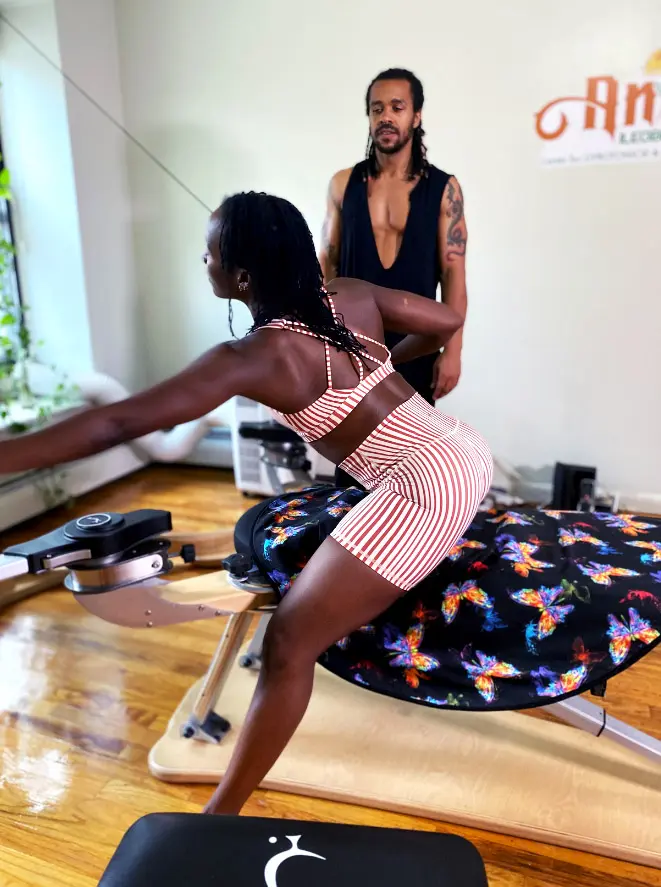How Often Should You Practice Gyrotonic Exercise for Best Results?
Gyrotonic exercise is gaining popularity for its unique approach to movement and flexibility. But how often should you practice it to maximize benefits? In this guide, we'll explore the optimal frequency of Gyrotonic sessions for achieving the best results.
Understanding Gyrotonic Exercise
Gyrotonic exercise combines elements of yoga, dance, and swimming to create a unique workout experience. This versatile approach engages the entire body, promoting flexibility and strength.
At its core, Gyrotonic focuses on circular movements, which helps in achieving a deeper range of motion. By integrating breath with movement, practitioners often find a harmonious connection that can enhance both physical and mental wellness.
It's not just about physical benefits; Gyrotonic exercise also cultivates a sense of mindfulness. While engaging in this practice, many individuals report feeling more aligned with their bodies, leading to improved self-awareness.
Factors Influencing Practice Frequency
Determining how often to practice Gyrotonic exercise depends on several personal factors. First and foremost, consider your individual fitness level. Beginners may benefit from shorter sessions, while seasoned practitioners might thrive with more frequent sessions.
Your specific goals will also play a crucial role. If you aim to enhance flexibility quickly, more frequent sessions may be necessary. Conversely, if you simply seek to maintain your current state, practicing two to three times a week may suffice.
Listening to your body's signals cannot be overstated. Fatigue, soreness, or discomfort may indicate it's time to adjust your frequency. Personal reflections, like how you're feeling both physically and mentally, will guide you toward the right amount of practice.
Recommended Practice Schedule
Experts often recommend a balanced schedule of Gyrotonic practice that can vary based on your experience. Beginners typically find great results with about two to three sessions per week. This allows ample time for recovery and muscle adaptation.
As you progress, you might consider increasing your practice to four or more sessions weekly. Advanced practitioners often engage in daily workouts, integrating Gyrotonic sessions with supplementary exercises for a comprehensive fitness routine.
It's essential to remember that quality matters more than quantity. A well-executed session, focused on your breath and movements, can be more beneficial than simply showing up for more frequent classes without intention.
Listening to Your Body
Your body is the best indicator of how often you should practice Gyrotonic exercise. Pay close attention to how you feel during and after your sessions. Signs of overextension or excessive fatigue signal it may be time to recalibrate your routine.
If you notice increased soreness that lasts beyond a couple of days, consider spacing out sessions to allow recovery. Alternatively, if you feel invigorated and ready, that could be a sign to increase the frequency of your practice.
Incorporating rest days into your schedule is just as important as workout days. They provide your muscles and mind the necessary time to recharge, ultimately leading to better performance when you do practice.
Additional Tips for Best Results
Maximize the benefits of Gyrotonic exercise by complementing your practice with other modalities. Engaging in activities like swimming, Pilates, or even regular walking can foster overall wellness and improve your Gyrotonic performance.
In addition to physical activity, consider lifestyle changes that promote recovery and resilience. Prioritize hydration, proper nutrition, and sufficient sleep, as these play vital roles in how often you can effectively practice.
Lastly, keep a journal of your Gyrotonic practice. Tracking your sessions and noting how you feel afterward will provide invaluable insights over time, helping you fine-tune your schedule for maximum results.
Summary of Best Practices
Regular practice of Gyrotonic exercise can lead to significant improvements in flexibility, strength, and overall well-being. Finding the right frequency that works for your body will ensure you reap its many benefits.


